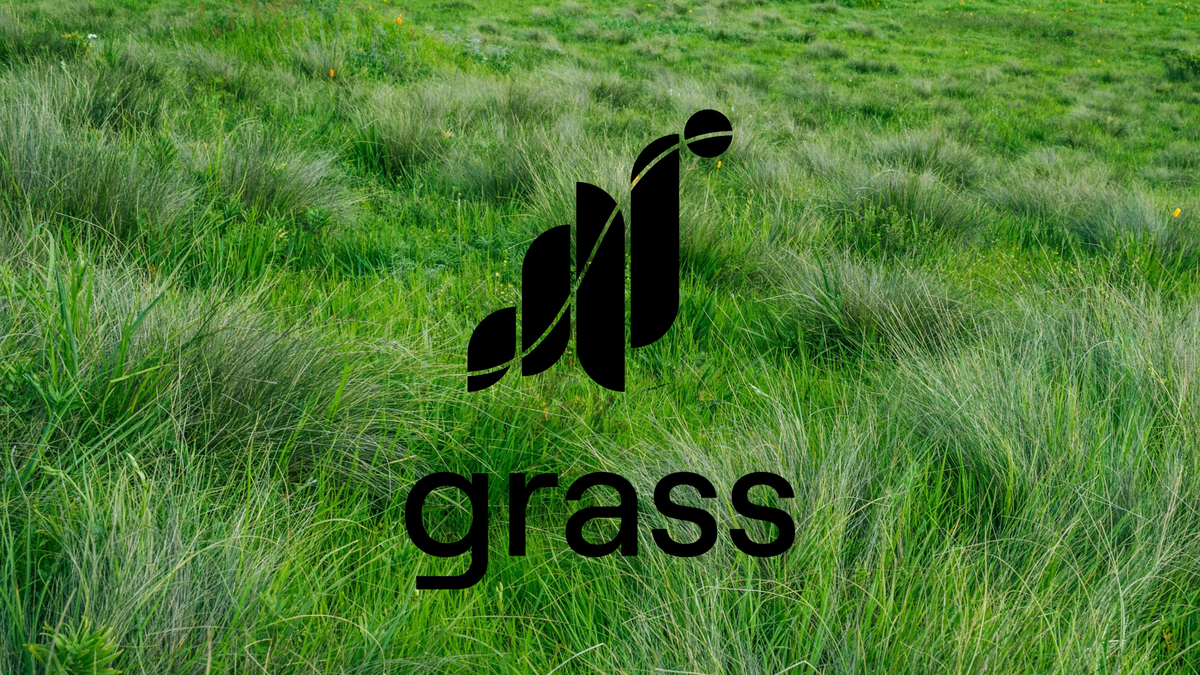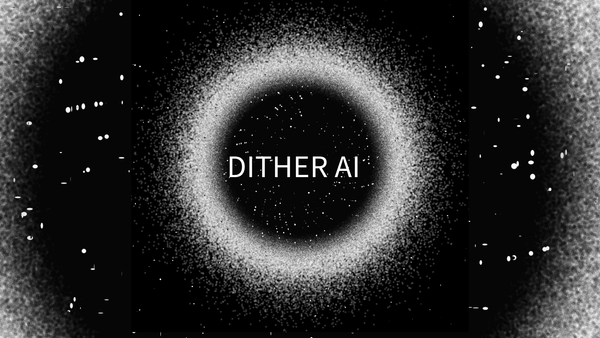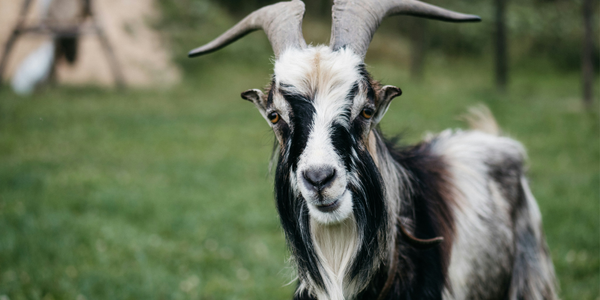The Grass Network: Realigning Incentives for an Open AI Future

Picture this: It's 2027, and artificial intelligence has eaten the internet.
A few mega-corporations dominate the digital landscape, armed with massive language models trained on every webpage. Content has become homogenized as algorithms optimize for engagement over originality. Users, once the lifeblood of the vibrant web 2.0, have been reduced to passive data points — their every click, scroll, and like quietly harvested to feed ever-hungry AI models.
But we're getting ahead of ourselves.
While the AI revolution is undoubtedly transforming every aspect of the internet, a growing movement of technologists, researchers, and crypto entrepreneurs are working to write an alternative future — one where AI empowers an open, decentralized web rather than devouring it. At the forefront of this movement is Andre Radonjic, CEO of Worm Labs and the creator of the Grass Network.
Fresh off the heels of Grass's historic token airdrop, one of the largest in the history of the Solana ecosystem, we’re trying to understand his vision for using crypto-economic incentives to create a more equitable and sustainable data economy in the age of AI.
The Problem: Web Scraping & AI's Thirst for Data
To understand what Grass is trying to solve, we first need to talk about data — specifically, the questionable ways many companies currently acquire the massive datasets needed to power cutting-edge AI models.
Think about the last time you installed a mobile app or browser extension. Did you take a close look at the permissions you were granting? Odds are, nestled between innocuous-sounding requests like "storage" and "browsing data" was something much more invasive: permission to track your activity across the web.
This practice, known as web scraping, has existed for decades.
However, as machine learning models grow in size and capability, the value and importance of web data has skyrocketed. Some estimates suggest data acquisition now accounts for over 25% of the total cost of AI development.
As the AI arms race heats up, tech giants are going to ever-greater lengths to slurp up web data, often at the expense of users' privacy and device performance.
A 2021 study found that over 40% of popular browser extensions contained web scraping code, secretly hitchhiking on users' devices to extract data.
Users are rarely informed about this hidden data harvesting, let alone compensated for it. Meanwhile, the value generated by models trained on their scraped data accrues to a handful of tech giants. This broken incentive structure, Radonjic argues, is at the heart of the crisis facing the AI-powered internet.
"Imagine if Visa could just sneak into your wallet and use your dollars without your knowledge or consent," he explains. "That's the state of data on the internet today. Tech companies are extracting massive value from user data while giving nothing back to those users. It's not just exploitative; it's unsustainable. Sooner or later, the well is going to run dry."
And as AI's thirst for web data grows, the consequences of that dry well could be catastrophic.
Without large, diverse, up-to-date datasets to learn from, the development of open and accessible AI models could slow to a crawl — leaving only those companies with the resources to acquire data at any cost.
"We're rapidly approaching a future where a few tech giants hoard all the data and, by extension, control the future of AI," warns Radonjic. "If we want to avoid that kind of dystopian scenario, we need to totally rethink how data is collected, valued, and exchanged on the internet. And that's where the Grass Network comes in."
Introducing the Grass Network
So, what is Andre Radonjic's proposed solution to this looming data crisis? In a word: decentralization.
The Grass Network is a decentralized protocol built on the Solana blockchain that aims to democratize web scraping and create a more equitable data economy. Here's how it works:
Users install a small piece of software that allows their devices to contribute unused compute and bandwidth to the network. When an AI company wants to perform a web crawl, they submit a request to the Grass Network, which distributes the scraping task across thousands of user devices.
As these devices perform the requested scraping, they are compensated with GRASS tokens - the native cryptocurrency of the network. A portion of the fees paid by the company requesting the data is distributed directly to the users providing resources.
"It's a win-win model," explains Radonjic. "AI companies get access to a huge pool of distributed resources to perform efficient, cost-effective web scraping. And users get paid for data they're already generating, without having to give up control or ownership of that data."
The potential scale of this model is staggering. Even in its early stages, Grass is already processing over 100 terabytes of web data per day — more than was used to train GPT-3, one of the most capable language models currently in existence. And demand is surging, particularly for the multi-format data (text, images, audio, video) that is crucial for training the next generation of multimodal AI systems.
At the heart of this ecosystem is the GRASS token.
Beyond serving as the "gas" that powers the network and incentivizes participation, Radonjic sees GRASS as a key governance mechanism to keep the network open and decentralized for the long haul.
"We're not just building a decentralized scraping protocol," he emphasizes. "We're laying the groundwork for a new kind of data economy - one that's transparent, participatory, and resistant to capture by any single entity. The GRASS token is how we align everyone's incentives to make that vision a reality."
The AI Threat to the Open Internet
But why go to all this trouble in the first place? After all, the internet has remained relatively open and decentralized through several waves of technological disruption - from the rise of search engines to the social media revolution. What's different this time?
The short answer: artificial intelligence.
Radonjic is among a growing number of experts who believe that AI, not crypto or any other technology, will be the defining force shaping the next era of the web. And if early trends are any indication, that AI-first web could look very different from the internet we know today.
"What really sets one AI model apart from another is how well it accesses new information as it hits the internet," explains Radonjic. "Right now, there are effectively only two ways to do an internet-scale web crawl, and those companies are building walled gardens around their data and models."
The result is a kind of self-reinforcing cycle of centralization.
As more interactions are funneled through a small number of dominant AI platforms, those platforms are able to collect ever more data to further improve their models. Meanwhile, smaller players are left to fight over scraps, or resort to increasingly invasive scraping tactics.
Radonjic worries this could lead to a future where the internet as we know it, a vast, vibrant patchwork of sites and services, is gradually replaced by a handful of homogenized AI experiences, served up by the same few companies.
"We're at an inflection point where if we don't act soon, AI could take the internet in a very closed, centralized direction," he warns. "Imagine a web where every search, every conversation, every piece of content is filtered through the same few AI models. It would be like an echo chamber on steroids."
This is where decentralized networks like Grass come in.
By providing an open, transparent, and economically sustainable alternative to centralized scraping and data hoarding, Radonjic believes systems like Grass could act as a critical counterweight — ensuring that the building blocks of the AI-driven internet remain accessible to a wide range of participants.
"Decentralization is about more than just privacy or efficiency," he concludes. "It's about ensuring that the next generation of the web remains a level playing field - a platform for innovation and expression that's open to everyone.
That's the core mission of the Grass Network. And with the backing of the Solana community, I believe we really have a shot at achieving it."
Grass Network Architecture & Scalability
To understand how Grass plans to achieve this ambitious vision, it's worth taking a closer look at the network's underlying architecture.
From the start, Radonjic knew that building on a fast, low-cost blockchain would be essential to making the network accessible to a wide range of participants. Solana, with its high throughput and sub-penny transaction fees, was a natural fit.
However, sending every single web request and data proof directly to Solana would quickly congest the network. To avoid this, Grass uses a custom rollup solution.
"The rollup is basically a high-speed data aggregation layer," explains Radonjic. "It handles all the proofs of web requests, data transfers, and other Grass-specific functions off-chain. Solana just secures the GRASS token itself and acts as the settlement layer."
This approach allows users to tap into Solana's speed and low costs for essential functions like staking and governance, without bogging down the network with a constant stream of micro-transactions.
More importantly, it ensures that Grass can scale to handle enterprise-grade data volumes without compromising on decentralization or accessibility. Anyone with a computer or smartphone can contribute to the network and earn rewards, regardless of their technical expertise or economic status.
"From day one, our goal has been to make Grass as open and inclusive as possible," says Radonjic. "The rollup architecture is what makes that possible. It's a way to get the benefits of a high-performance blockchain like Solana without the usual drawbacks."
The Road Ahead for Grass
As exciting as the recent airdrop and launch of the Grass mainnet has been, Radonjic is quick to emphasize that it's just the beginning.
"What we're seeing now is really just the first step in a much larger vision," he says. "The foundation has been laid, but the most impactful developments are still ahead of us."
One of the key milestones on the horizon is Stage 2 of the Grass rollout, which will introduce new ways for users to participate in and benefit from the network.
"Right now, anyone can contribute their spare bandwidth and compute to the network," explains Radonjic. "But with Stage 2, we're introducing specialized hardware that will allow power users to scale up their contributions and earn even more."
This hardware, designed in partnership with Solana Labs, will enable a new class of "super-scrapers" - users who can handle enterprise-scale scraping tasks and data volumes. The result will be an even deeper, richer, and more up-to-date pool of web data.
But Stage 2 isn't just about scaling up data collection. It's also about unlocking new use cases and opportunities across the ecosystem.
"We have multiple creator platforms in development that will allow developers to build entirely new kinds of applications and services on top of Grass data," reveals Radonjic. "Everything from AI training tools, to decentralized search engines, to next-gen Web3 social media."
Looking even further ahead, the potential applications are boundless. Radonjic envisions Grass becoming a key piece of infrastructure for the future web - a decentralized data backbone that powers everything from large language models to AR/VR environments to new forms of digital content and interaction that we can scarcely imagine today.
"In a lot of ways, I think we're in a similar position to where Ethereum was in 2015," he muses. "We've built this powerful new infrastructure, but the really transformative applications are still ahead of us. And like with Ethereum, I think a lot of those applications will end up being things that nobody sees coming."
The Future is Green
As the Grass Network enters this next stage of growth, it's clear that the historic token airdrop was just the first rumble of a much larger earthquake. With specialized hardware in development to empower super-users, new creator platforms on the horizon, and an ecosystem bristling with untapped potential, Grass is poised to become a vital piece of infrastructure for the AI-powered internet of tomorrow.
By leveraging the power of decentralized crypto networks to create a more open, participatory, and fairly incentivized model for web scraping and data sharing, Andre Radonjic and his team aren't just building a compelling new use case for Solana and Web3 - they're helping to chart a course toward a future where the awesome capabilities of artificial intelligence can be harnessed without compromising the fundamental openness and accessibility that have made the internet one of the most transformative inventions in human history.
In the coming years, as AI reshapes our digital landscape in profound and unpredictable ways, we may well look back on the emergence of the Grass Network as a watershed moment - the point where we proved that with the right architecture and incentives, it's possible to have our AI cake and eat it too.
And for the Solana ecosystem, which has long sought a breakout use case to rival Ethereum's early successes in DeFi and NFTs, Grass may represent something even more significant: the arrival of a true killer app and the beginnings of a more mature, impactful, and sustainable Web3 economy.
"We're still in the early innings," says Radonjic. "But I believe Grass has the potential to be one of those once-in-a-generation projects - the kind that doesn't just change a single industry but changes the whole game. And I can't wait to see what this incredible community will build and achieve as we grow together."



